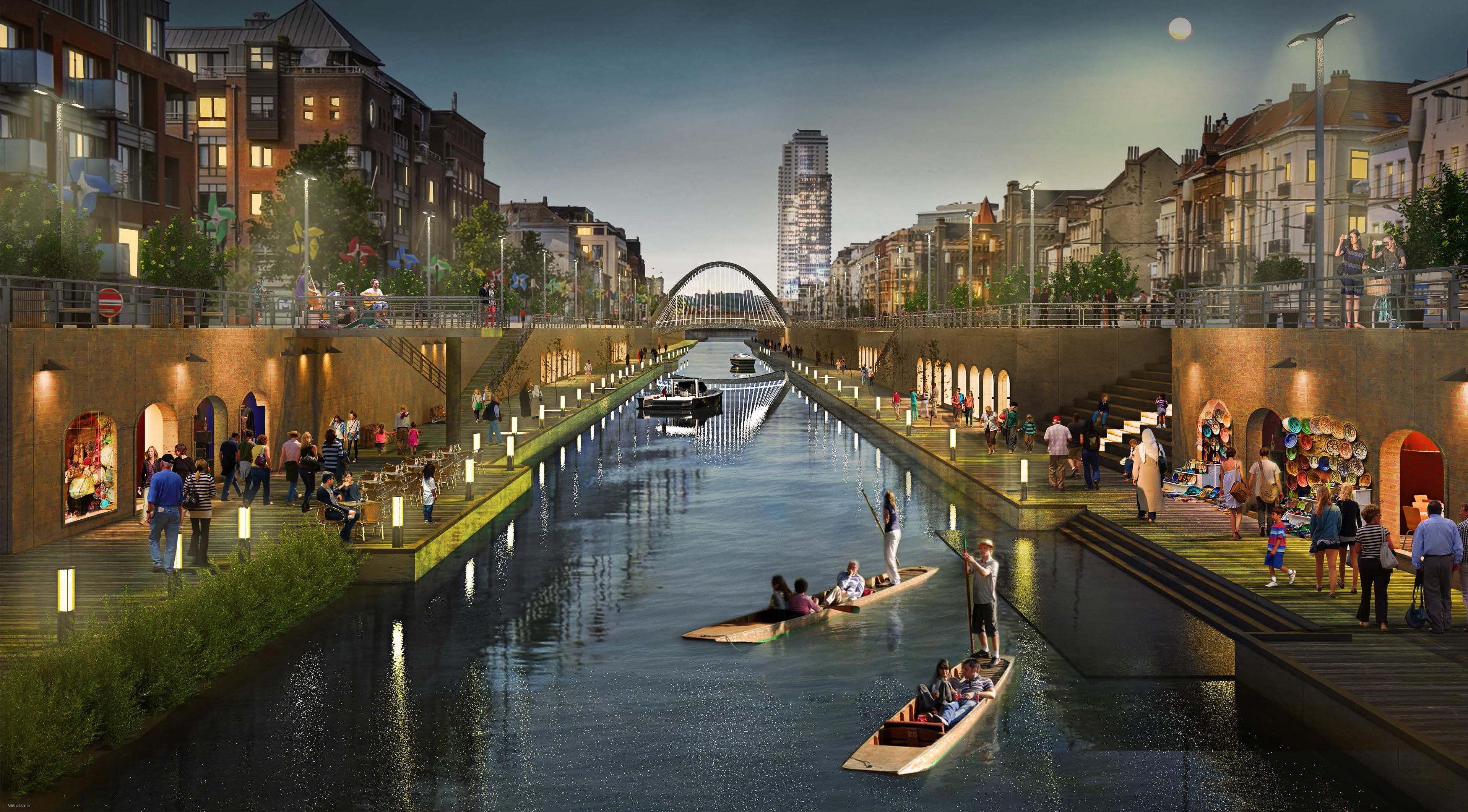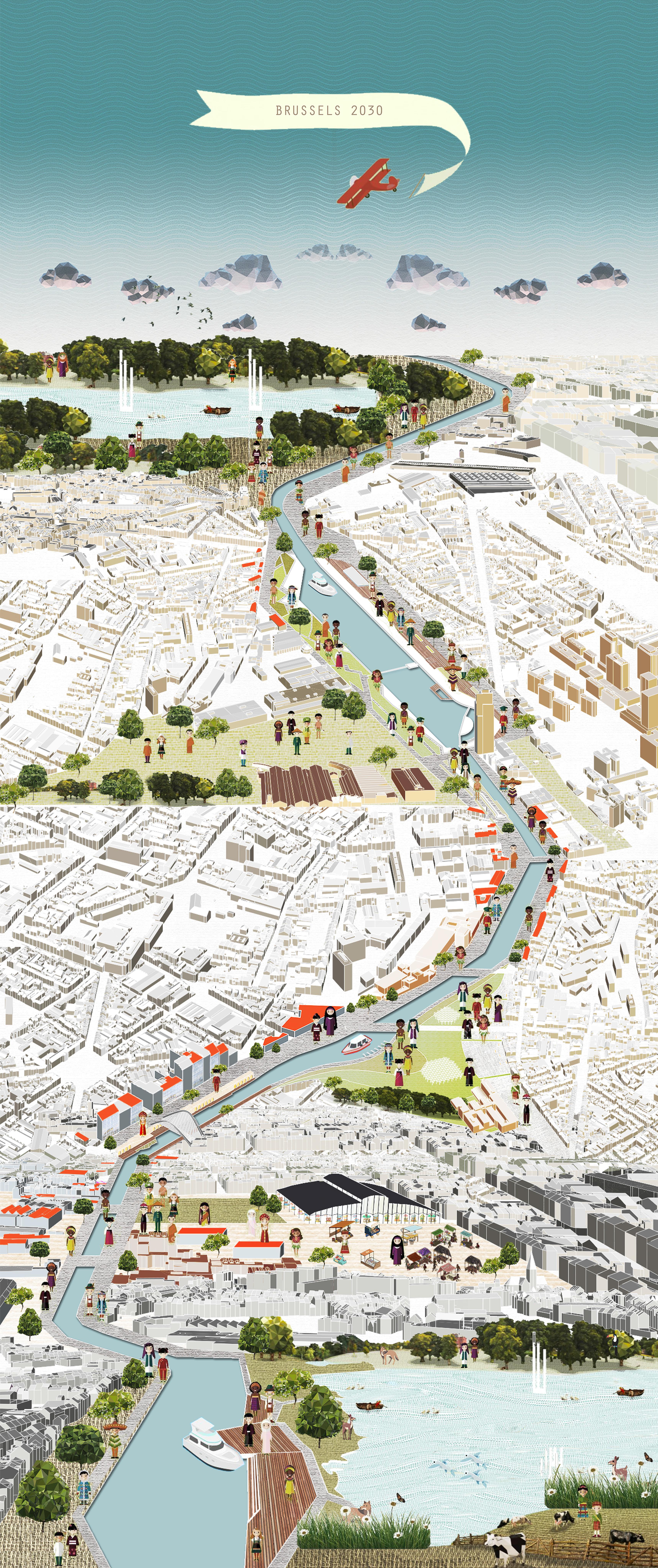Brussels
University of Bath
Chen He, Khoo Lee Hui, Andreas Panagiotou, Hai Wang, Shijian Zheng
Brussels heavily invests in the public facilities in its historic centre. While appealing to tourists and privileged residents, this has the effect of marginalising the city’s underprivileged population, as they are segregated from many of its benefits.
Our masterplan identifies Brussels’ canal quarter as a quintessential representation of its segregation and social divide. Using research, analysis and local insight from site visits, we have drawn a nuanced portrait of this central area: districts full of hope and dynamism; a strong space with a young population; a piece of town full of talent, with a canal that is perceived as a border but has the assets to become a strategic axis of development for the region. We’re confident the regeneration of the canal territory would provide a significant opportunity for Brussels to become a more inclusive city.
Finding a way to utilise this lost industrial land, promote inclusivity, and facilitate cultural exchange between the historic centre and the rest of the city is a challenge. Our solution is to create an additional centre along the canal stretch that establishes a common ground for all communities.
With the canal’s strategic location between a variety of neighbourhoods and Brussels’ historic core, there is great potential for an urban recomposition that improves the integration of economic, property, social, environmental and cultural dynamics. By turning this physical and mental barrier into a place of inclusivity and positivity, we can rediscover the importance of the waterway and redesign it for the city’s current and future needs.

